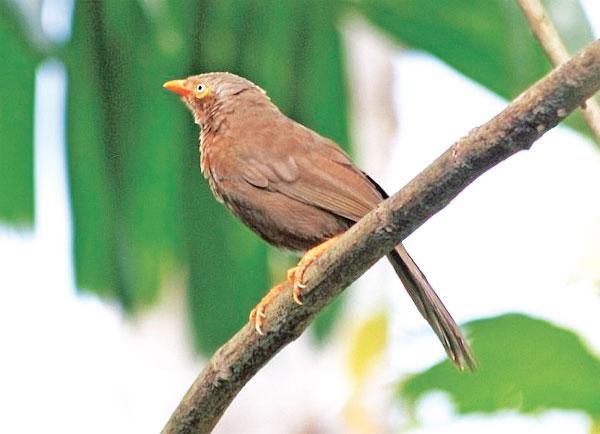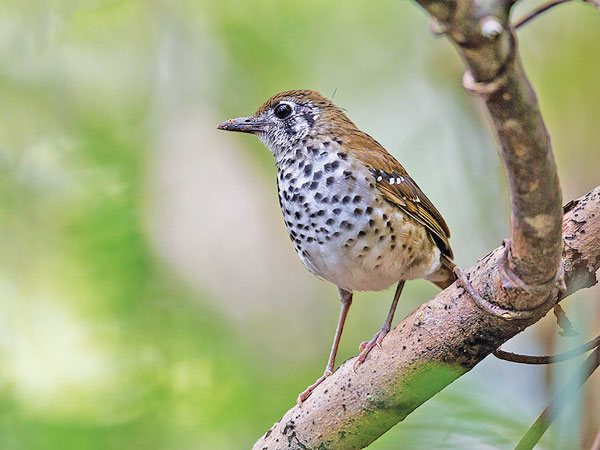
Orange-billed babbler
The orange-billed babbler (Turdoides rufescens) also known as Ceylon rufous babbler or Sri Lankan rufous babbler is a member of the family Leiothrichidae.
The orange-billed babbler is a resident breeding bird endemic to Sri Lanka. In the past, it was considered to be a race of jungle babbler, Turdoides striatus.
Its habitat is rainforest, and it is seldom seen away from deep jungle. This species, like most babblers, is not migratory and has short rounded wings and a weak flight.
Although its habitat is under threat, it occurs in all the forests of the wet zone, and is quite common at prime sites like Kitulgala and Sinharaja. It builds its nest in trees, concealed in dense masses of foliage. The normal clutch is two or three deep greenish blue eggs.
These birds are plain orange brown below, and have a slightly darker shade above. The crown and nape are grey, and the bill is orange.
The orange-billed babbler lives in flocks of seven to ten or more. It is a noisy bird, and the presence of a flock may generally be known at some distance by the continual chattering, squeaking and chirping produced by its members. It is usually the first sign that a mixed-species feeding flock, so characteristic of Asian wet forests, is in the vicinity. It feeds mainly on insects, but also eats jungle berries.
In Sri Lanka, this bird is known as rathu demalichcha (translates to ‘red babbler’) in Sinhala language.This bird appears on Rs. 10 Sri Lankan postal stamps. The bird appears on the 100 Sri Lankan rupee currency note as well. (2010 series).
Scimitar babbler

The Sri Lanka scimitar babbler or Ceylon scimitar babbler (Pomatorhinus melanurus) is an Old World babbler. It is endemic to the island of Sri Lanka, and was earlier known as a subspecies of Indian scimitar babbler.The nominate form is found in the western part of wet hill regions of Sri Lanka, while race holds worthi is found in the dry lowlands and eastern hills.
Most scimitar babbler species are referred as parandel kurulla by the Sinhala speaking community. The term parandel refers to dried grass and probably refers to the colour of the bird. The vernacular name of the bird parandel kurulla roughly translates to English as ‘dried-grass coloured'. This bird appears on a Rs. 4.50 Sri Lankan postal stamp.
Spot-winged thrush

The spot-winged thrush, (Geokichla spiloptera), is an Asian thrush, a group within the large thrush family Turdidae.
It is an endemic resident breeder in Sri Lanka. This uncommon species breeds in hill rainforests, and to a lesser extent in drier woodlands, at altitudes between 500 and 2000 m.
The wintering areas are similar but include less well-wooded areas, and are generally at 750 to 1500 m altitude. The spot-winged thrush is generally solitary and can be quite secretive, especially in the dense undergrowth and bamboo clumps it favours.
Spot-winged thrushes are omnivorous, but eat far more insects than fruits. They feed on the ground.
Adults of this 27 cm thrush are light brown above with a double wing bar of white spots. The pale face has two dark bars. The under parts are white with heavy spotting. The bill is black and legs are yellow. The song is a rich and varied whistling.
Young birds have buff streaking on the upper parts, and the face and the underparts are light brown with heavy streaking.
The loose cup nests are lined with vegetation and placed in a tree fork. 2-3 buff or bluish-green eggs are laid. This species raises two broods each year.
In Sri Lanka, this bird is known as Pulli Wal Awichchiya in the Sinhala language.
